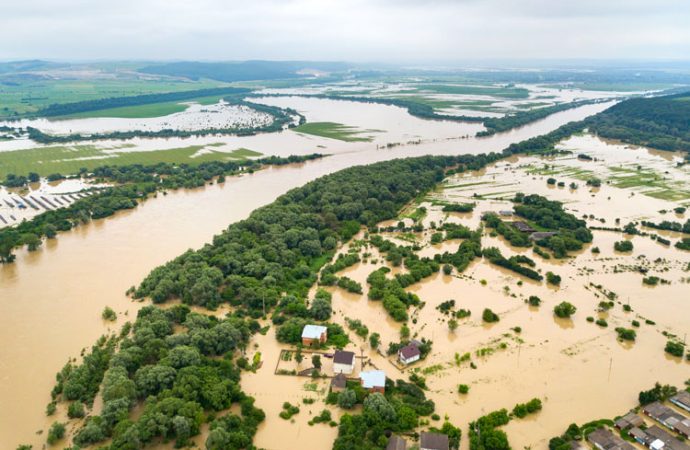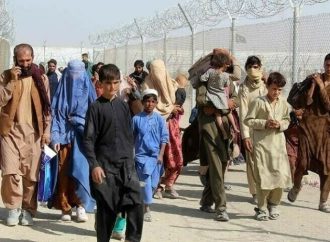Author Recent Posts Urwa Sajjad Ahmed Abbasi Latest posts by Urwa Sajjad Ahmed Abbasi (see all) Disinformation campaigns against Pakistan – May 16, 2023 Geopolitics of Economic Corridors – March 20, 2023 Disinformation on Social Media – March 20, 2023
Since the turn of the century the world has experienced many changes not only in practical terms but also in theoretical sphere. Due to this paradigm shift non-traditional security threats have gain prominence. One of them is the recent floods in Pakistan that caused horrible infrastructure damage and loss of human lives. These types of natural disasters are usually common all over the world. In Pakistan the most prominent causes of these floods are excessive rainfalls, lack of dams and melting of glaciers due to global warming. Pakistan is facing this threat due to climate change. The people who live in plain flood prone areas are highly affected. In the year 2022, the country has experienced its deadliest floods. Large parts of the country including the provinces of Baluchistan and Sindh received record-breaking monsoon rainfalls causing immense losses loss for the country.
The August 2022 was considered to be the dampened August as Pakistan received more than 3 times of its usual rainfalls. Whereas, Sindh and Baluchistan received 8 times more rainfall due to which floods occurred. As per report from the National Disaster and Management Authority (NDMA), the rains affected almost 33 million people and destroyed 1.7 million homes and almost 1700 people lost their lives.
These deadly floods caused damage to the agricultural sector as the income of people were reduced due to loss of crops and livelihood, shortage of grain and the risk of food security. According to flood extent mapping using satellite images, it is predicted that the total agricultural area in Sindh is approximately 4.9 million Hectares and this area is used for the cultivation of three major crops of Pakistan including rice, cotton and sugarcane.
The rice crop zone has suffered a lot due to floods and 80% loss is expected in the production of rice. While in sugarcane zone the flow of flood remains relatively low hence, they are bearing the loss of 61% in the production. Likewise, the devastating floods also damaged the cotton zone and these crops are suffering with the loss of 88% in the production.
In economic terms there is huge loss to economic sector as the people lost their assets, their homes, their productive equipment’s and the infrastructure is also badly damaged. According to World Bank Development Update it is illustrated that the growth rate of Pakistan became slower because of terrible floods but gradually Pakistan will deal with this crisis situation. Due to these harmful floods the inflation rate has increased which sets a new record of 47 years of high inflation rate in Pakistan. The prices of energy and agricultural products were already high due to Russian-Ukraine war but the terrible floods give fuel to the fire.
Likewise, the industrial sector of Pakistan is also struggling because of floods and the production and activities of the industries were reduced to minimal level. Due to floods the textile, food, tobacco, and petroleum industries were affected massively and the growth rate is reducing. According to an assessment on Pakistan flood damage and economic loss it is estimated that that country is facing the loss of $15.2 billion due to floods. Textile which is one of the largest industry of Pakistan and is also the source of employment, production as well as foreign exchange suffered a lot and the its exports are reduced. Before these terrible floods the country usually needed 4 million bales to run the industry but due to terrible floods it is now predicted that Pakistan would have to import double of that particular amount to meet the industrial requirements.
Spread of waterborne diseases is another dreadful damage that occurred due to floods. The people living in flood prone areas are now receiving the spread of infectious diseases. As per the UNICEF of mid-January 2023 almost “4 million people were still living near contaminated and stagnant flood waters risking their survival and well-being.” A number of infectious diseases including Diarrhea, Malaria, Dengue, Fever, Typhoid was accuring causing significant harm to the survival of the people.
Similarly, heightened poverty is another major cause of drastic floods in Pakistan as the people lost their assets and means to generate income, lost their jobs, lost their homes and equipment. This increases the poverty line and resulted in damage to Pakistan’s internal as well as financial stability. According to International Labour Organization almost 5.3 million people lost their jobs due to floods in 2022.
Likewise, food shortages, rise in food prices, loss of educational sector like destruction of school and colleges are some other damages that recent floods in Pakistan have done.
Hence the floods have caused massive destruction in Pakistan and it cannot be resolved in a month or year as the people lost their homes, their livelihood, their crops and their livestock. UNICEF is playing a great role in this regard by providing humanitarian assistance to the needy and playing its important role by repairing current educational, water sanitation and health facilities for relocating family. Several non-governmental organizations as well as government institutions are also working on their comprehensive framework to build back better future for the flood effected people and also country’s climatic resilience. As the situation is continuously evolving on the ground so the damage estimates may increase and will require lots of efforts to deal with the reconstruction of the damaged stuff including infrastructure, buildings and livelihood etc. Apart from that Post Disaster Needs Assessment (PDNA) is also working on a plan for the recovery and reconstruction of the people living in flood affected areas.
- Disinformation campaigns against Pakistan - May 16, 2023
- Geopolitics of Economic Corridors - March 20, 2023
- Disinformation on Social Media - March 20, 2023






















Leave a Comment
Your email address will not be published. Required fields are marked with *